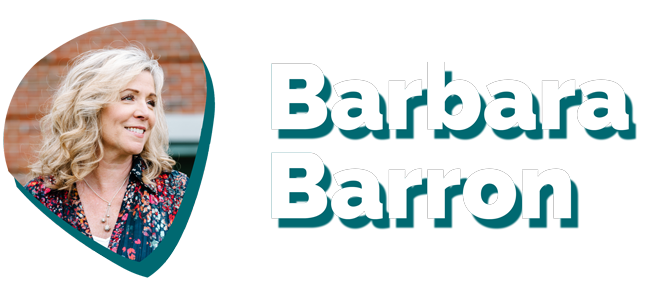by Barbara Barron | Posted April 13th, 2022 | Subscribe to this newsletter
I am currently hip-deep in a feasibility study for a client. This means I’ve been having 45–60-minute conversations for the last several weeks with the organization’s donors, board members, and other stakeholders. And while the questions are fairly standard for a project like this, I’m seeing how much more there is just under the surface and am reminded of how powerful this process can be. In fact, could it be a mode for building a better cultivation and stewardship program?
First, the basics. What do we ask in a feasibility study? The main headline questions we ask are:
- What are your opinions of the organization and its leadership?
- What impresses you (or doesn’t) about the proposed project?
- How realistic do you think our working goal is?
And the one that helps us assess the viability of the campaign:
- If the project were to come to fruition, do you see yourself making a gift to the campaign, and in what amount or range?

Feasibility studies, if you haven’t experienced one, are designed to help the organization’s decision-makers better understand the strengths, weaknesses, and viability of their project. It is a test of the project’s appeal and whether it’s a good gamble to mount a campaign to fund it.
After all, as I have said to clients considering this, if you can just finance the project with reserves or go to the bank, consider that first. Capital campaigns are risky. And unpredictable. They are costly in terms of time and human and other resources. They require commitment and discipline from everyone for anywhere from twelve to thirty-six months. Or longer. If the project requires construction, there are the issues around the supply chain, rising costs, and the joys of living and working in a construction site.
Have you subscribed to this newsletter yet? It only takes a minute.
So, a feasibility study, conducted during the important pre-planning stage, long before anything is decided, is smart money spent. The investment gives you the best gauge you can get of whether your project has the appeal it will need to leverage significant gifts – often the largest any donor has made to your organization. Pro tip here: the study must include the very people who have the capacity and the propensity (that dynamic duo of factors) to ensure the campaign’s success. It’s not a moment to sell the project, although that is a natural inclination. It is truly about learning. It’s a “reality test.”
So what’s the “much more beneath the surface” I referenced above? It’s that stuff between the lines of those questions and many others. If we are really tuned in, therein lie gems of intelligence and understanding to help us know what these donors really think and truly care about. This is gold.
The conversation is a safe space. I promise confidentiality. I, as the consultant, am a neutral party. Like the stranger on a train phenomenon, donors often share thoughts and feelings, slights, and annoyances they have yet to share with the organization and its leaders. I don’t think this is necessarily a healthy dynamic. In a perfect world, they would feel comfortable being candid with the people who have the power to make change. As a response to this common condition, a new and different model of feasibility study is emerging, from the genius of Andrea Kihlstedt of the Capital Campaign ToolKit. They call it a Guided Feasibility Study. In that model, the organization’s key leaders conduct the interviews and have the tough conversations themselves. They are the one hearing the truth. Interesting, right?
For our purposes here, the reality is this: the consultant is hearing these truths. I don’t always love what I hear. But it’s powerful stuff anyway. It is all excellent intelligence for improving cultivation efforts, regardless of whether there’s a campaign waiting in the wings.
It’s humbling to be trusted in this way. It has led me to wonder why we don’t do this more often. Why don’t we center our cultivation and stewardship programs around opportunities to listen deeply to our donors.
Imagine designing intentional, scheduled conversations like these with donors every couple of years. We’d invite them to share their frank thoughts and opinions as we listen. Everyone loves to be asked for advice, right? There’s an old adage that goes: “If you want advice, ask someone for money. If you want money, ask them for advice.” So true. Let’s ask our loyal donors what they think of our program and how we are delivering it. Let’s ask what they believe we should be doing more of, or less of. Let’s ask how it feels for them to support our organization and its mission. Let’s ask for honest feedback about how well we report back to them about how we put their gift to use. Or not. In short: let’s just lay it out there and let them tell us what they think.
Wow. Are we ready for that? Imagine it from the donor’s perspective. If we have ever said that we care what they think, we probably owe it to them to actually ask and listen.
Maybe it’s not an hour-long interview. Maybe it is a couple of open-ended, vulnerable questions that we ask over coffee. It could be a part of our cultivation and stewardship plan to remain closely connected to these individuals and families. Think of the level of trust we could build. Imagine what we could learn that would help us do what we do better.
There’s power in good questions and in open-minded, open-hearted listening. If you are interested in some truth telling, I’d love to help you think it through. Reach out to me about your school via email.
Be well,
Barbara Barron

[email protected] // @BBAdvancement
My name is Barbara Barron, and I’m writing this blog to share advice on a profession that I adore.
I’ve been working in the field of Independent School Advancement for over 20 years. In that time, I’ve had the pleasure of creating and implementing successful fundraising plans and programs for so many incredible schools. I’ve had the privilege of seeing real growth at The Carey School, Marin Primary & Middle School, Woodside Priory, Crystal Springs, Presidio Knolls, Sage Ridge, and San Diego French American, and others. (Maybe we’ve met!)
Nothing makes me happier than seeing a struggling school start to thrive. My hope is that you’re here to make a positive change as well. I hope my advice can be a part of that change.
Shoot me an e-mail if you want to swap tips, or share your voice here.
Let’s do this, together.







